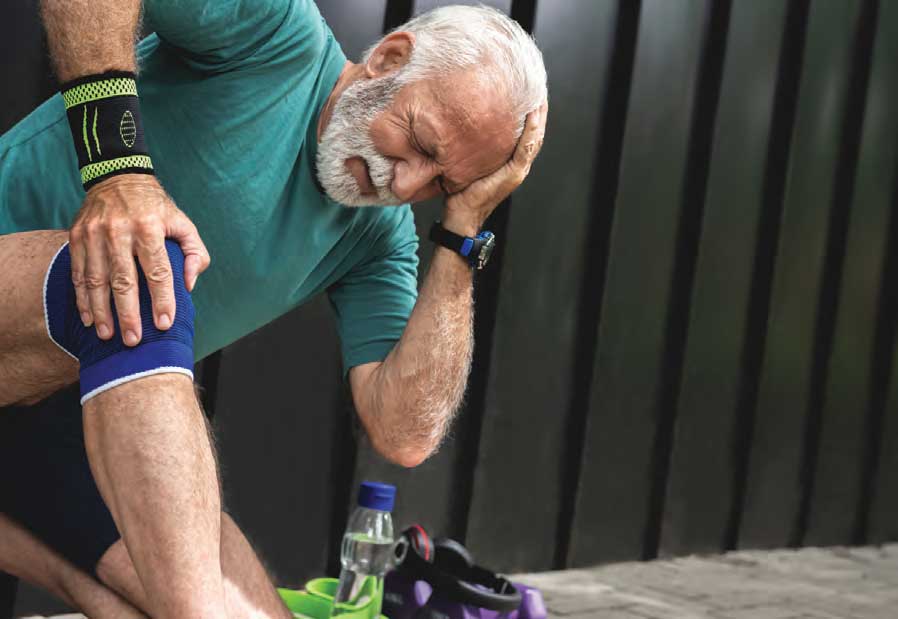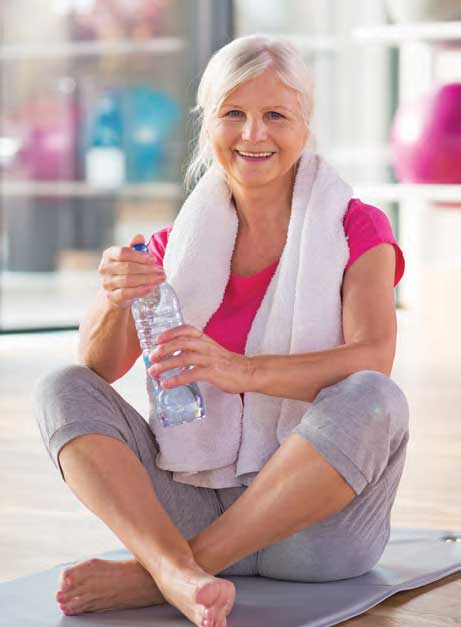Learn when to keep moving through exercise pain and when to stop.
By Camille Noe Pagán

Exercise is crucial if you have arthritis. But knowing just how much activity to do when you’re hurting can be tricky. Research shows that moderate activity can help prevent the progression of arthritis and improve overall function. But while mild muscle soreness after a workout is normal, sharp pain during or immediately after can signal injury. And sometimes simply the fear of pain can keep you from wanting to do any kind of exercise. Here’s how to determine when it’s OK to work through exercise pain – and when it’s not.
If you have mild to moderate pain in a specific joint area before you work out: Some mild pain is typical when you first start to move, but after a few minutes you’ll usually start to feel better, says A. Lynn Millar, PhD, a professor of physical therapy at Winston Salem State University. “Our joints and muscles get nutrition through movement,” she explains. “With some movement, you’ll improve the lubrication and circulation around that joint.” Start with some gentle range of motion movements and if that feels OK, progress to some low-impact activity like walking.
If you have moderate to severe pain in a specific joint area before you work out: Focus on a different area for a day or two. If your knees hurt, decrease the intensity. If the pain becomes worse, then stop the lower body moves and work your upper body instead. “Continuing to put pressure on a joint when it’s especially sore could contribute to joint damage, so it’s best to ease up for a while,” says physical therapist Richard Kassler, supervisor at New York University Hospital for Joint Diseases.

If you have moderate to severe joint pain during exercise: Stop immediately. “Most people with arthritis can work through mild pain safely. But if you’re experiencing a lot of pain while you exercise, even if you’re not doing a particularly joint-taxing workout, it may be a sign that you have inflammation in the joint, or even joint damage that requires treatment,” says Kassler.
If you consistently have joint pain (not muscle pain) after exercise: Switch to a workout that puts less pressure on your joints. “If you need an elaborate brace or have to pop ibuprofen constantly, it’s a pretty good sign that your activity is too hard on your joints. Swimming, water aerobics and biking are all good options for people with joint pain.
If you occasionally have moderate to severe joint pain the day after you work out: Cut back on the intensity of your workout. Take a day off, then doing a shorter, less strenuous workout. If your pain still doesn’t let up, switch to a less intense form of exercise, such as water aerobics.
Mary Hand’s favorite quote, ”No Pain, No Gain. That’s Insane. Listen to your body.” Our Arthritis Foundation exercise classes in the pool and in the PAC are good for everyone whether they have arthritis or not. Please consider joining us. See the schedule for times and places.
-Camille Noe Pagán





 © 2025 Kirby Pines LifeCare Community. All Rights Reserved |
© 2025 Kirby Pines LifeCare Community. All Rights Reserved | 